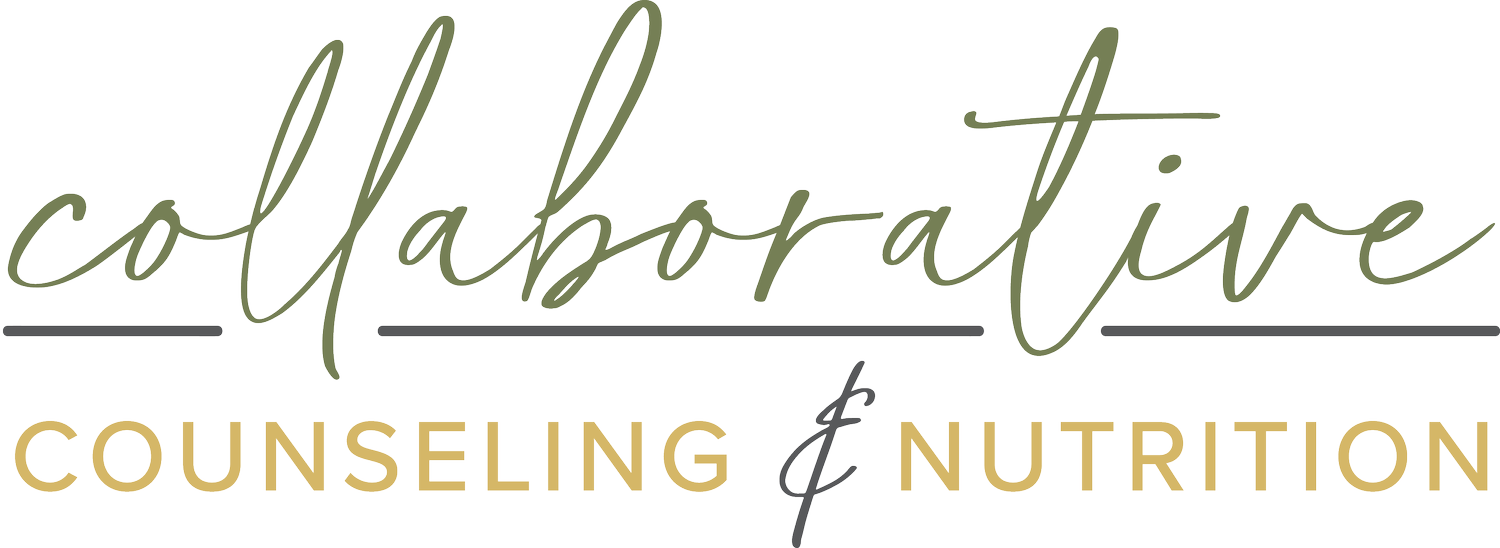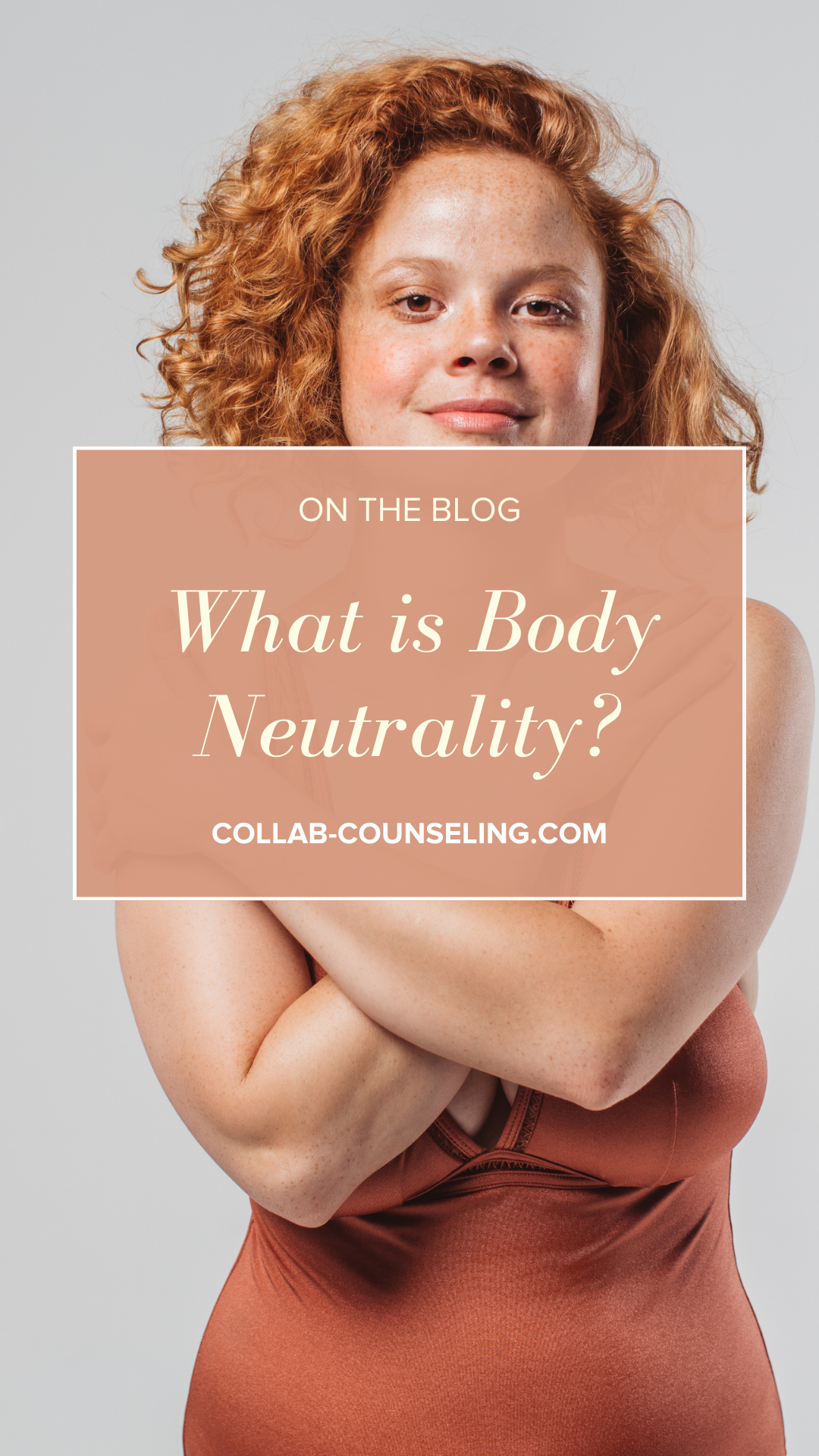What is Body Neutrality?
We love hearing from our CCN Clinicians! Today, Brenna is helping us better understand Body Neutrality. Take it away, Breanna!
Body Neutrality & Body Positivity
Oh, the sweet revolution that is Body Neutrality! There is so much to be said regarding this approach to thinking about your body and yourself. To best understand this approach, it might be helpful to start by discussing Body Positivity.
You may have heard of body positivity, as in recent years a wave of this movement infiltrated social media, but this push to change the narrative around body talk truly began in the 1960s. The body positivity approach is one rooted in “radical self-love”. It can be described as an approach to thinking about oneself and body from a positive viewpoint that celebrates the body and its differences with the intent to improve one’s thoughts and feelings towards their body and themselves (Leboeuf, 2019). Essentially, this movement promotes a shift from critical/negative thoughts of oneself and body to more positive thoughts such as “My body is beautiful and all bodies are beautiful”, “I love my body”, etc.
The movement took off to counteract some of the problems prevalent within society stemming from beauty standards. Because in diet culture, Eurocentric beauty standards impact individual body image, body positivity aims to speak to those individuals who do not fit the beauty standard and give them a more positive way to view themselves and others (Chiat, 2021). While the intention behind this way of thinking is extremely positive (hence the name), for some, it can be difficult to function from this angle, especially if their authentic thoughts blatantly contradict thoughts that are rooted in such extreme positivity.
You can’t “fix” or alleviate the distress that comes along with struggling with your body image simply by telling yourself the exact opposite thought and expecting yourself to believe it. Not only might it feel unnatural and inauthentic to pivot to “My body is beautiful!'' when your typical way of thinking completely opposes this notion, but this statement also carries problematic messaging at the root of it. To explore this, let’s consider what message may be behind “My body is beautiful.”
This statement perpetuates the idea that our bodies SHOULD be beautiful/beauty is the goal (hello toxic beauty standards). More specifically, the message “My body is beautiful.” is not innately wrong, especially if thinking in this way has helped you improve the way you think and feel about your body. However, it may be more helpful/meaningful to expand your idea of what represents your value beyond or outside of your appearance or beauty.
If we continue to emphasize the importance of “beauty” within our thoughts, it can perpetuate the toxic idea that is so prevalent within our society relating to morality and our appearance/bodies. The more we prioritize the way we look because our society (diet culture) normalizes this focus, the more we hang on to the idea that our bodies encompass moral value i.e. “my body is good versus bad”. We focus less on the parts of us that make us unique and represent our value and more on “conditional” parts of us that don’t truly represent our value as a human such as our looks.
Despite what society normalizes or tells us, our bodies really are designed to change. If our bodies were supposed to represent our value, it would be wavering and conditional. Once we stop allowing our looks to define us and focus on the person or body houses, we give ourselves freedom and space to exist IN our bodies instead of BE our bodies. So many doors can open up for us- hello fulfilling lives!!!
Body Neutrality
Body neutrality is an alternate approach to body positivity that tells us that our bodies are neither bad nor good, they just are. Body neutrality emphasizes the idea that our bodies’ purpose is rooted more in the functionality of living (aka carrying us through life) versus being an indicator of the quality of human we are or how we are doing in life (Horn, 2021). This is a very different way of thinking about our bodies and ourselves, so it can take lots of practice and thought restructuring. Some key parts of body neutrality to highlight: 1) “realistic, mindful, and flexible”, 2) “appreciating, respecting, and caring for the functionality of the body”, and 3) “self-worth is not defined by appearance” (Pellizzer & Wade, 2023).
Practicing Body Neutrality
It might feel really easy to say: “I notice my stomach is getting bigger, so others will not like me or find me attractive.” A more neutral approach could sound like: “I notice my stomach looking larger. My stomach is digesting the food that nourished me throughout the day as I - took care of my kids and enjoyed their childhood with them; supported my friend/spent quality time with my friend; got through a really hard work day; enjoyed a date/connect with my partner.” Notice the shift?
Practicing body neutrality ALLOWS more opportunities for you to enjoy and experience the most important roles in your life.
The next time you find yourself struggling with your thoughts/feelings about your body. Maybe start by considering what would a neutral thought be in the situation. What are the positive and negative thoughts that I have/am trying to tell myself? Why might these not be effective or helpful? Could a neutral thought feel different? How can I appreciate my body for housing my soul today? Even if I am critiquing my body or feel uncomfortable in my body, can I identify one thing my body has done for me today?
Gratitude can also be a powerful tool as you begin practicing body neutrality. When we come from a place of gratitude, we notice our thoughts focus more on parts or aspects of life that hold meaning, instead of simply falling into a rabbit hole of focusing on the negatives. Our thoughts build off one another, so if we shift to practicing gratitude in a time where our thoughts are trailing into the negative space, we may find our thoughts becoming more and more positive (i.e. one positive thought can create more positive thoughts, kind of like a chain reaction). The benefit of adopting neutral thoughts about our body is that it eliminates the extremes of good versus bad and positive versus negative. It frees up space for us to recognize what our body does for us (which is inherently positive) instead of critiquing it for how it looks.
Moving Forward
Some takeaways I want to leave you with on the topic of body neutrality: Your body is a vessel that carries you through life. Hating or disliking your body is not an obligation to exist, contrary to what many of us have been led to believe. If you fall in the category of hating or disliking your body, it’s very possible that you don’t actually have those feelings toward your body, but you might feel those feelings towards what you are allowing your body size or shape to mean about you. Your body is not who you ARE, so why give it so much power to define you? What if you could appreciate your body for carrying you through life, enduring life, and allowing you to experience what matters most to you in life instead of criticizing it the whole way? What could open up for you if you free yourself from the chains that are body- and self-criticism? There is a path that leads you to disengage from the extremes of optimism and criticism and starts with considering you don’t have to love or hate your body, you can actually just be in your body.
Resources Used:
Chiat, A. (2021). Body Positivity Movement: Influence of Beauty Standards on Body Image.
Horn, N. (2021). Body neutrality.
Leboeuf, C. (2019). What is body positivity? The path from shame to pride. Philosophical topics, 47(2), 113-128.
Pellizzer, M.L., & Wade, T.D. (2023). Developing a definition of body neutrality and strategies for intervention. Body Image, 46, 434-442.
Collaborative Counseling & Nutrition is an outpatient nutrition and body image counseling center, with locations in Indianapolis and Carmel, that provides compassionate, holistic eating disorder treatment. Through practicing mindfulness, intuition, and Health At Every Size, we are on a mission to help you find a true state of well-being! We take an anti-diet, weight-inclusive approach with all our clients and work to help guide you towards a way of healthy living designed by you, just for you! This post is for education purposes only and should not be used as a substitute for treatment for an eating disorder. If you are looking for a registered dietitian or therapist to assist you on your recovery journey, please reach out today!


